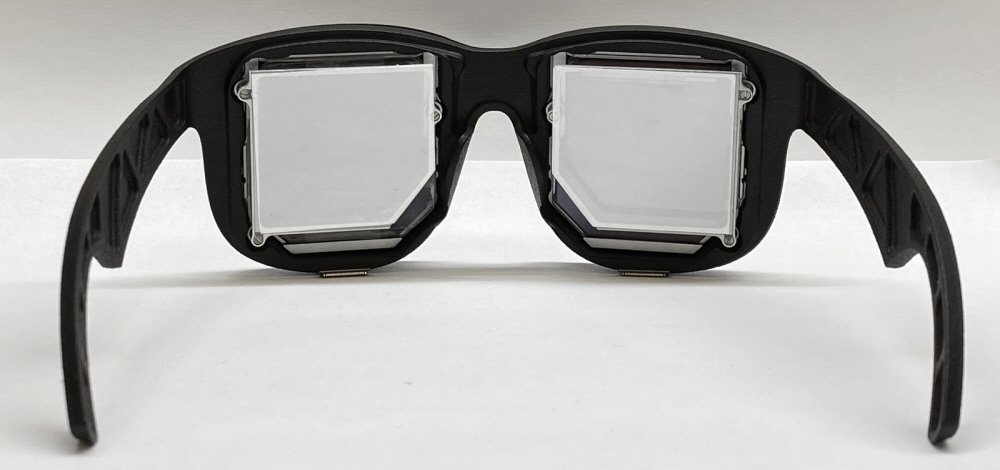
Facebook Reality Labs (FRL), an AR/VR research division under Facebook, has unveiled a new technology that will enable small and lightweight virtual reality headsets at the level of glasses.
One of the reasons why the existing virtual reality headsets had more thickness and weight than glasses were lenses. By replacing this with thin holographic optics, virtual reality glasses with a high resolution that exceeds the human eye limit in principle and a wider color gamut than conventional products are possible, while being about the same thickness as ordinary sunglasses.
The prototype for proof of concept is a single color and the lens thickness is 8.9mm. Currently, it has a viewing angle of 90 degrees and a resolution of 1,200 pixels, which is close to that of a general virtual reality headset. According to a paper published by Facebook, the thickness was achieved through a film-shaped holographic lens and a polarization-based optical folding. The structure requires a laser instead of a general LED as a light source, but the development team explains that this can be an advantage that enables a wider color gamut than conventional displays, rather than a certain limitation.

The prototype for proof of concept is equipped with a light source, an image reproducing unit, and a power source in the form of inserting a lens module into a sunglasses-shaped frame made of a 3D printer. In addition, only single color is still possible in the prototype, but the desktop prototype is realizing full color, so the size of colored sunglasses is expected to be possible in the future.

Virtual reality headsets including Oculus are lightening up to 500g, but compared to this, it can be said that it is a new technology that seems to have suddenly come to the future. Of course, it is only in the research and demonstration stages, and there are limitations such as stray light problems. It is not yet known when commercialization will be possible, but it is expected that a virtual reality display without a sense of incongruity will be put into practical use in an unexpectedly quick time. Related information can be found here .


















Add comment